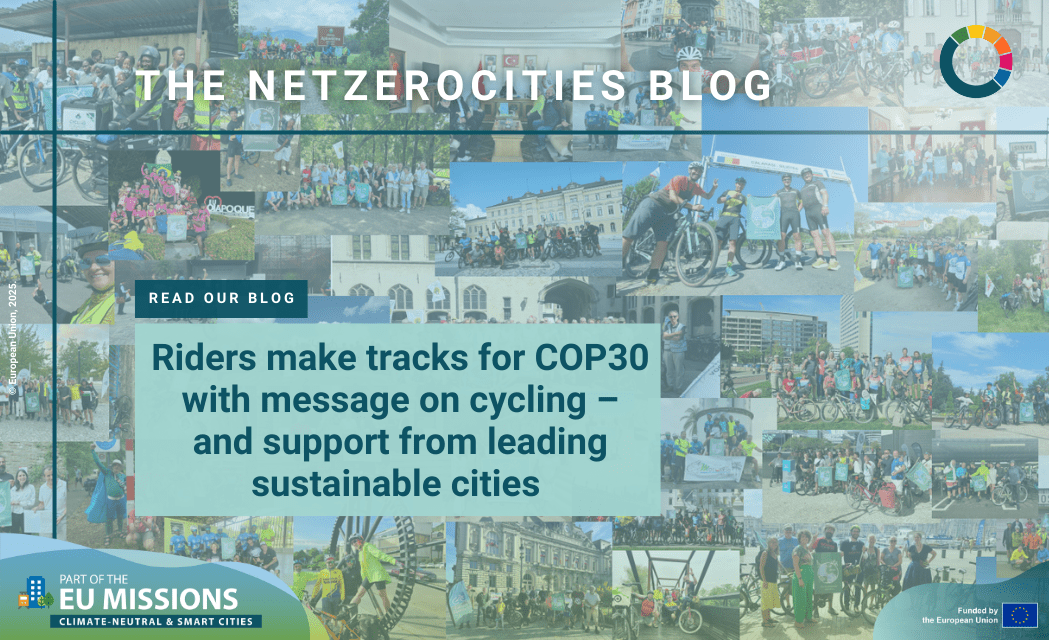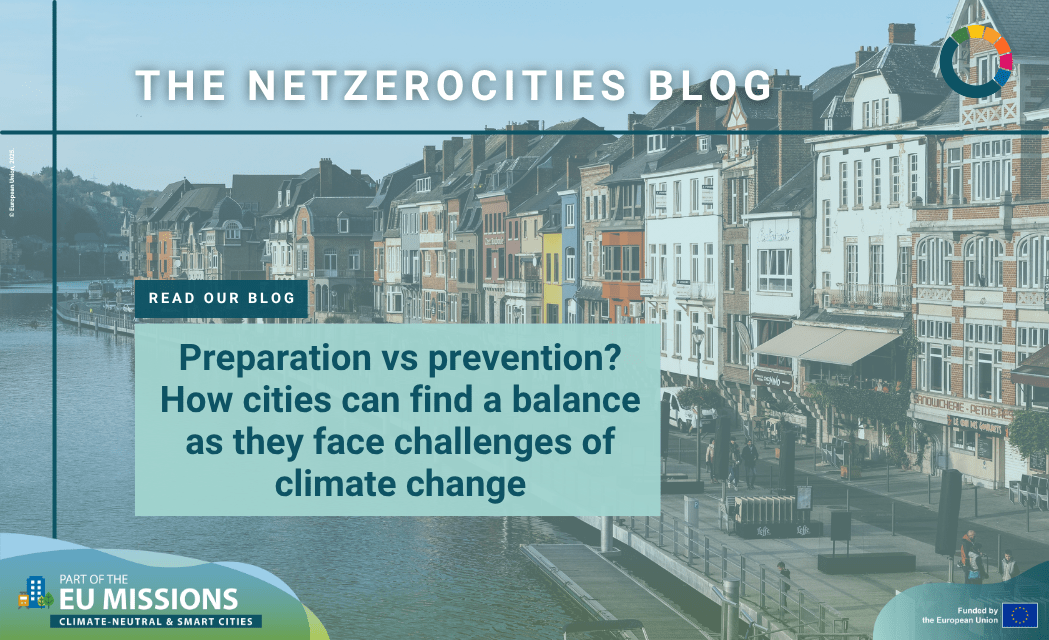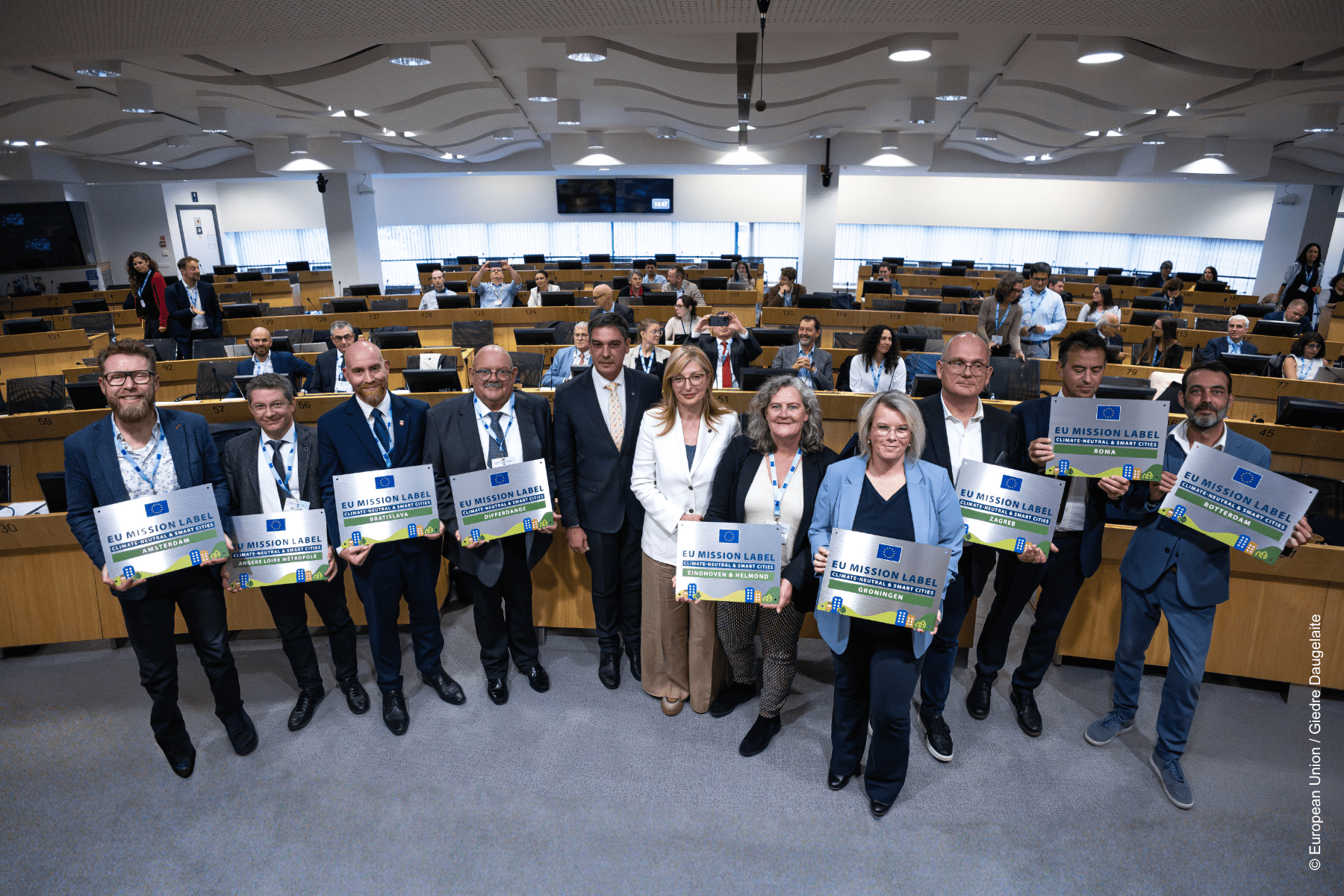When cities embrace bike-friendly design, they not only reduce emissions but encourage healthier communities, calmer streets and a culture of sustainability. Acting EU Cities Mission Board Chair Paulo Ferrão and board member Françoise Guaspare reflect on the significance of a citizen-driven initiative to promote the European Declaration on Cycling at COP30.
For some cyclists, not all roads to COP30 in Brazil are to be found in South America’s largest country.
At least, this was true for hundreds of riders in the COP Bike Ride, a citizen initiative that carried ten proposals to leverage cycling for climate protection to November’s UN Climate Conference in Belém. The journey became the longest relay of its kind, covering six months and four continents with participants cycling, then sailing to their destination.
More than 1,000 cyclists joined different parts of the 30,000-kilometre itinerary, collecting messages from local governments outlining their cycling commitments and policies for 2030, to be delivered to the COP presidency. Along the way, they connected with communities to raise awareness and exchange stories linking local challenges to global climate goals.

A tale of two journeys across Europe
Beginning in May in Baku, the host city of COP29 in Azerbaijan, the Eurasia branch of the ride passed through 19 Mission Cities – Aachen, Antwerp, Bologna, Bordeaux, Brussels, Bucharest, Florence, Istanbul, Kranj, Leuven, Lisbon, Ljubljana, Madrid, Marseille, Padova, Paris, Prato, Utrecht and Zagreb – over five months.

- In Leuven, the city council presented a letter highlighting the local cycling policy. 75% of the city centre is a designated cycling zone and the wider network is expanding rapidly.
- In Antwerp, bikers shared a meal with representatives of the Antwerp Cyclists’ Union and the Grandparents for the Climate in the Peperfabriek.
- In Brussels, ministerial officials presented the Good Move Mobility Plan, with its 70 kilometres of new bikes lanes and a 38% increase in walking and cycling trips.
- In Bologna, the deputy mayor relayed a letter from the municipality on the future actions of the administration in favour of bicycle mobility.
- Ljubljana organised a group city ride and picnic along the Ljubljanica, followed by a meeting with the mayor to discuss the ten COP30 Bike Ride proposals.
- Bordeaux marked the riders’ arrival with an event hosted by three associations: CyclotransEurope, Vélo-Cité and Objectif RER Métropolitains.
- In Paris, the Académie du Climat hosted the public release of a documentary on the COP29 Bike Ride that unfolded last year from the French capital city to Baku.
- Madrid organised a bike festival in support of the COP30 Bike Ride, including an event on cycling policy hosted by the Greenpeace office.
Before setting sail to Belém, cyclists convened in Lisbon for a joint event with the national mission platform Cidades pelo Clima and Ecomood Portugal, under the patronage of the Portuguese Ministry of Environment and Energy.
Out for delivery: the European Declaration on Cycling
Taking a different route, the European branch promoted the European Declaration on Cycling – a political statement jointly signed by the European Parliament, the Council and the European Commission in April 2024. The declaration sets out an ambitious vision to promote cycling as a sustainable, accessible, inclusive and health-enhancing mode of transport and outlines 36 principles designed to boost bicycle use by:
- expanding and upgrading cycling infrastructure,
- increasing public and private investment,
- supporting cycle tourism,
- and strengthening data collection on cycling across the EU.

It also provides renewed political backing for the sector, helping develop Europe’s cycling industry further, and a new network of national cycling contact points has been established.
Early findings from the EU-funded Cycling Counts study reveal more than 900,000 kilometres of cycle lanes across Member States, though significant regional disparities remain. The first progress report on the European Declaration of Cycling in September 2025 identified 270 actions underway across the EU, many implemented at local and regional level. Between 2021 and 2027, EUR 4.5 billion will be invested in cycling, including EUR 3.2 billion from EU funds, enabling the construction or improvement of more than 12,000 kilometres of cycle lanes. Nearly EUR 1.3 billion from the Recovery and Resilience Facility has been allocated to cycling-related projects.
The European Declaration on Cycling stresses that cycling measures should “be properly considered in the plans of the Horizon Europe Mission on 100 Climate-Neutral and Smart Cities by 2030”. The first progress report highlights strong action by Mission Cities through their Climate City Contracts.
- Dresden aims to increase the cycling modal share to 75% by 2035.
- Aarhus plans to reach a 50% cycling share by 2030.
- Gävle aims to become one of Sweden’s top cycling cities by 2025 and seeks to double bicycle trips compared to 2018.
- Parma promotes cycling as the preferred form of everyday transport and supports cycling-related businesses and services.
- Barcelona developed a Bicycle and Personal Mobility Vehicle Programme.
- Ioannina, Padova and Wrocław promote cycling through workshops, communication campaigns and local action plans.
- Leipzig offers subsidies for cargo bikes for companies as part of a pilot on carbon-neutral logistics.
- Stockholm’s Bike2Green uses gamification to monitor and rewards bike trips through kilometric reimbursements and economic prizes.
Mission Cities are also addressing peri-urban connectivity.
- Lund is building seven bicycle “super-routes” to link the city to nearby suburban and rural communities.
- Tauragė is extending its cycling infrastructure to remote settlements near recreational areas.
- Ljubljana is connecting its local network with national cycling routes.
Cycling as climate action at COP30
At COP30, participants in the ride advocated cycling every day as a serious climate strategy and a quick win for reducing emissions, with many additional benefits.
They also encouraged countries to include cycling in their Nationally Determined Contributions (NDCs) – the climate plans submitted under the Paris Agreement. Currently, fewer than one-third of NDCs include measures on active travel such as cycling and walking, and only a small fraction set out specific targets, actions, budgets, governance tools or evaluation frameworks.
A human-powered engine of urban climate action
The examples of European cities show cycling as a powerful driver of urban climate action – a simple, everyday activity that can reshape the future. And after a long journey and with the backing of many cities, cyclists in the COP30 Bike Ride were the couriers of this promising message, delivering it in memorable fashion to leaders in Belém.





